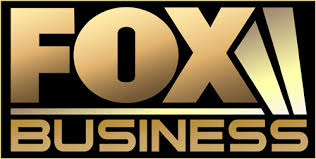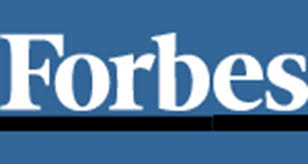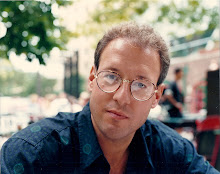
Tuesday, July 24, 2012
Is your product positioning "corn fed?"
Wednesday, July 18, 2012
Coke Cannes
How did Coke find happiness? By graduating our Extreme Product Makeovers Coke found that "a sale is a transfer of enthusiasm." Happiness promotes enthusiasm. Happiness promotes positive emotional response. But does happiness promote carbonated sales? True, Coke spreads Happiness and wins advertising awards but does happiness translate into sales for Coke?
Happiness is not "It" for Coke. Happiness is a generic cost-of-entry parameter. Happiness is not 'ownable' - No matter how many impressions the company's corporate coffers cough up. The most highly consumer-desired product potential to use to reverse declines in carbonated beverage consumption is something else. There is a more powerful "Special User Effect" to better drive consumer habits and practices that can be owned. But nice work collecting the bling. Does anyone other than the agency take that to the bank?
Wednesday, March 21, 2012
The Strategy of Whiz Kids
But in this is the point that the two competitors target audiences based on "cost-of-entry" parameters. Things taken for granted by the majority. An adult with no children would feel uncomfortable working with our orthodontist. A child would feel uncomfortable being treated in a room surrounded by 55 year old adults.
So how would orthodontists better differentiate themselves within their respective audiences? Orthodontists targeting children and orthodontists targeting adults better differentiate themselves by identifying a "reason-for-being" within their sphere to which patients better relate. In the same way both Folgers and Maxwell House "deliver" flavor and aroma both cannot occupy the same "mental space."
To set themselves apart Maxwell House stays the course with various forms of "Good to the last drop" messaging. What's good to the last drop? The coffee. What about the coffee's good to the last drop? The flavor and aroma. What could be finer than that?
Mrs Olsen! She said drink "Mountain Grown" Folgers. Mountain grown was supposed to be the support point to the contention or unique selling proposition that Folgers was "the richest kind." The richest kind of what? The richest kind of coffee. What about the coffee was "the richest kind?" The flavor and aroma. So you see, we have two products not doing a very good job differentiating themselves. Both focus on a "sensory" parameter category consumers generally take for granted.
How'd one get off the treadmill? By focusing on another and more consumer-relevant "reason-for-being." By focusing on "stimulation" rather than "flavor" and "aroma" Folgers became "the best part of waking up is Folgers [or caffiene] in your cup?
What happened? A $300 million Folgers business became a $1.6 product.
So what's your "reason-for-being" versus your competitors. And is it that good?
That's thinking outside of the box :)
Labels:
coffee,
Differentiate,
Folgers,
ground roast,
Maxwell House,
reason for being,
strategy,
Whiz Kids
Thursday, August 19, 2010
The "SuperSized" Economy; There is no "value added."
We're headed for more bad economic times. It's not a question as if we're asking, "Are we headed for more economic hardships?" It's a fact. We are. And here's why.
We're headed for more bad times because there's no way to "add value" to the economy the way marketers "add value" to soft drinks by replacing sugar with cheaper high fructose corn syrup. The economy is chock full of artificial ingredients and the only way to return to solid ground is to subtract the "value added" components of the economy that got us in self-induced trouble in the first place.
For example, General Mills "added value" to Wheaties in the 80s by replacing "whole wheat" with non-descript "whole grain." As consumer pull-through diminished retailers began delisting the brand. General Mills had hoped no one would notice the change the same way no one noticed when Coke replaced sugar with HFCS - consumers just drank more because Coke could sell larger quantities (20 ounce bottles vesus 12) for fractions of a cent more. Supersizing was a great way to get a larger share of stomach. But it didn't work with Wheaties. General Mills never gave consumers more product for just a little more money. That was Steve Sanger's fault as inextricably linked to companies such as ADM and Cargill as he is. By repositioning the brand as "whole wheat" again Wheaties increased distribution 24% and won Advertising Age Magazine's recognition as "The Year's Best Repositioned Brand.
The bottom line here is that we've already "SuperSized" the economy the same way McDonald's "supersized us. We found out it was unhealthy. Food scientists are just wonderful.
Labels:
General Mills,
mcdonalds,
super size,
US Economy,
Wheaties
Tuesday, August 17, 2010
California Governor's Election - Let's Delist The Candidates
Monday, July 12, 2010
What business are you really in?
So it's easy to see why Ray asks this question. ERP can easily become a commodity. Now Ray argues that mispositioning can put you in the wrong category and thus retard sales, buyer perception and hence PROFIT. But I say if you sell technology you sell that technology. iPads are selling iPads. If you're selling corneal transplants you're selling corneal transplants. If you're selling ERP you're selling ERP. But look at iPads. As a category they may be the emerging thin clients cloud computing's been wanting to make popular. In the end all human/technology interfaces will be thin clients. But you're still selling iPads. That's your category even though iPads are mostly used for fun. Now that you're in the category, the question is differentiating yourself within the category. Here's what I said.
Exactly Ray, Toss out all quadrant or matrix position systems quant jocks employ. They’ll throw any product, company, brand or category off track because it gives brands nothing they can own or use to differentiate. This is how categories become composed of highly price driven commodities in every category. So we discovered a company, product, brand or category’s reason-for-being best defined by finding it’s Special User Effect.
As General Motor’s proved, you can target exciting fun family products (Pontiac), versus family value products (Chevrolet) but GM killed Pontiac. It’s matrix quadrant was irrelevant to car buyers even though corporate strategy thought it viable. In reality, the division never knew what consumers wanted. It just made what they wanted then told advertising we needed it. That’s bass ackwards. The Pontiac Division never had a “consumer” reason-for-being. Same with brands I turned around like Folgers or Pampers. Though heralded as the second coming of CHrist by quant jocks and market research consumers perceived pre-ground convenience, flavor and aroma as “me-too” cost-of-entry sensory parameters so the agency direction of “Mountain Grown” to support the contention that Folgers was the richest kind of coffee NEVER moved the needle even though my client spent $100 million that year domestically to support the message. The SPECIAL USER EFFECT we found was “stimulation.” Stimulation was a “brand ownable” differentiator versus the “category generic” sales drivers of ‘convenience’, ‘flavor’, and ‘aroma’. To the 23% of heavy users who account for 87% of category volume annually “the best part of [their] waking up is caffiene [Folgers] in their cup.” To them, Folgers is in THE STIMULATION business. With this insight we turned a $300 million brand into a $1.6 billion business by stealing all that share from Maxwell House, MJB & Hills Bros who could not take off their matrix driven “category consumption” blinders. Great post Ray Man. So is the real question, "How should an ERP client best differentiate themselves in a highly price-driven commodity category."
By the way, was speaking to Kraft’s Beverage President Bob Levi who oversees Maxwell House for Kraft Foods. Though he knows all this he still just launched a new flavor and aroma campaign that bounced off the market like spit wads fired at an M1 Abrahms Tank. No impact against the 47 to 14 share lead stimulation gave Folgers…and only Starbucks once came close to hitting our competitive strategy on the head with their “Think Earlier” campaign. Anyway, the same thinking works regardless of what business you’re in.
Tuesday, June 29, 2010
How do you tell a brand's story? Marketing: Is your brand telling a great story or telling a story greatly?
Contrary to popular belief most brands tell a great story. At least that's what they believe. In reality they're telling a story greatly. What's the difference? Well, brands that tell stories greatly tend to say the same thing their rival does ... their advertising agency just says it differently. Brands that tell great stories have identified a product based selling dimension that dramatically differentiates themselves from competitors.
What are examples of brands that tell their stories greatly? Well, any category composed of heavily price driven commodity brands such as alcohol (beer, wine, ale, spirits), paper (paper towels, bath tissue, disposable diapers, napkins) or personal care products (shampoos, conditioners, oral care, etc.) ... some of the largest categories in consumer products utilize positioning strategies that converge on the same position as their rival ... they just have ad agencies that say the same thing differently. Detergents all claim to clean better and faster. All alcoholic beverages address the need state "to party" or "to relax." There isn't a single toothpaste (sensitive teeth being the exception) that doesn't trade on one of the five category attributes that account for all consumer perceptions in oral care - whitening, cavity prevention, breath care, gum care and tartar control. Year after year the message gets stale and only updated with new copy and actors ... not product based differentiators. Consequently, their ad spending drives category consumption rather than brand selection - ergo the saying, " I know that at least half of my advertising budget works ... I just don't know which half."
What are examples of brands that tell a great story? Well, Pampers recognized that 'fit' and 'dryness' were generic category cost of entry story parameters. Identifying an infant and toddler's 'development' finally enabled Pampers Phases Developmental Diapers to grow the business (ownable by Pampers) rather than the category by $1.2 billion per year for a decade, better relate to the emotional rewards of parenting and arrest toddler migration to arch rival Kimberly-Clark's Pull Ups. And for a fraction of the previous brand budget. Just one word, "development" made all the difference.
Now that's telling a great story, not telling a story greatly.
Another example of using a product-based selling dimension for the first time no one has seen to tell a great story? Back in the day the big three GRC (Ground Roast Coffee) brands - Maxwell House, Folgers and Hills Bros/MJB all thought people bought their product for convenience, flavor and aroma. Not true. These "me too" cost of entry parameters did not enable the brands to connect with their customer's lifestyles. For example, New Englanders did not spend their Sunday mornings with the New York Times and Maxwell House because of the brand's flavor and aroma. They bought the brand because the best part of their waking up is/was caffiene in their cup. The active product based selling dimension is 'stimulation' not flavor or aroma. This realization turned $300 million Folgers into a $1.6 billion brand and left Maxwell House standing in the dust.
Not long ago I was speaking with a Kraft Foods Marketing Director running the Gevalia Business. He wanted to know if I had any coffee experience. The conversation ended with his exclamation, "So you're the son of a bitch that did that to Maxwell House!" "You need to speak with Bob Levi." Bob is President of Kraft Foods Beverage Business. Having called Bob he listened then said, "Well I've been working for Kraft 22 years and I've never heard of you." And I said, "Well I've been working for Kraft for 35 years and I've never heard of you either. Would you like to hear what I've worked on at Kraft?" He "harumphed" and said I'd never worked at Kraft. I guess he'd better go ask, Karen Scott, Eric Strobel, Bob Morrison, and about 50 other functional line management and C-suite execs who welcomed me to the company to work on their brands. Needless to say I wasn't going to get a chance to work on Maxwell House or for Bob Levi though I've been pitching Maxwell House for about 40 years. Then I saw new advertising for Maxwell House. Same flavor and aroma crap. Bob Levi was so busy putting up walls and protecting his turf he hadn't heard a thing I said.
Now that's telling a great story. Not telling a story greatly.
Subscribe to:
Posts (Atom)
















